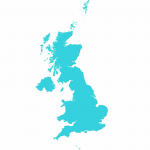Ofcom Propose to Share Upper 6GHz Band for UK Mobile and WiFi

After conducting more research, the UK telecoms regulator, Ofcom, has today formally begun to consult on a proposal that will allow low power indoor WiFi and mobile broadband (4G, 5G etc.) networks to “share” access to the upper 6GHz radio spectrum band (6425 to 7125MHz). But full implementation could take years.
The regulator has already made the lower part (5925 to 6425MHz) of the 6GHz band available for WiFi under the new WiFi 6E, WiFi 7 and future standards (here), yet the Upper part has remained the subject of some debate. Mobile operators want to harness it (licensed) to deliver faster 5G based data speeds, while others say it should go toward licence-exempt consumer WiFi. Existing users of the band (e.g. fixed services, satellite, radio astronomy etc.) have also sought protection.
Suffice to say, both sides of the debate have been able to field strong arguments and Ofcom has, thus far, opted not to pick a side. Instead, the regulator has been exploring the option of “hybrid sharing” (details), which could potentially enable, with some performance caveats (i.e. co-existence without causing interference is a challenge), the use of both Wi-Fi and mobile in the Upper 6GHz band.
Advertisement
The big development today is that Ofcom has now progressed these ideas into a formal proposal, which is set out below. This will be open to feedback until 5pm on 8th May 2025.
Ofcom’s Proposal
Lower 6 GHz (5925–6425 MHz)
We are consulting on making standard power Wi-Fi (up to 4 Watts) available in the Lower 6GHz band provided it is under the control of an AFC database (this would include outdoor use). This would be subject to a clear expression of demand from industry and an indication that industry parties are willing to provide AFC database services.
Upper 6 GHz (6425–7125 MHz)
We are consulting on a phased approach to maximise the use of spectrum by enabling commercial mobile and W-Fi to share the Upper 6 GHz band. We include detailed proposals to make Wi-Fi available in the band in phase 1. We provide an overview of our expected approach for enabling shared use by mobile in phase 2, including measures that may be needed to facilitate coexistence between mobile and incumbents.
Phase 1 – Initial Wi-Fi access:
We are proposing to authorise low power indoor Wi-Fi (up to 250 milliwatts) across the whole band on a licence exempt basis. We intend to do this as early as feasible, ideally before end 2025.Phase 2 – Adding mobile access:
We intend to propose the specific sharing mechanism between mobile and Wi-Fi, once the European harmonisation is clear. We are currently leaning towards a prioritised spectrum split as our preferred outcome with between 160 and 400 MHz prioritised for Wi-Fi. We expect the remainder (a minimum of 300 MHz) would be prioritised for mobile, enabling high power mobile deployments while still allowing Wi-Fi access to the full band where there is no mobile deployment.We understand demand for this spectrum might be greater in high traffic areas, we therefore intend to authorise mobile use of the band in high density areas (possibly by award) and will decide on the authorisation approach for mobile outside high density areas in due course (possibly through local or smaller area-based licences).
The catch above with Phase 2 (adding mobile access) reflects the admittedly understandable decision to link this change with wider talks on “European harmonisation” (Europe is also looking to adopt a similar approach), with related discussions currently being expected to drag on toward completion by 2027. Suffice to say that it might be a while before mobile operators can harness this band.
Finally, on the changes to the lower part of the band, it’s worth noting that solutions involving the use of a remote database have a bit of a mixed history (e.g. TV White Space wireless technology largely seems to have gone the way of the Dodo). In that sense, we’re not surprised to see Ofcom linking this to the need for a clear expression of industry interest, although that does mean the change may not necessarily come to pass.
Mark is a professional technology writer, IT consultant and computer engineer from Dorset (England), he also founded ISPreview in 1999 and enjoys analysing the latest telecoms and broadband developments. Find me on X (Twitter), Mastodon, Facebook, BlueSky, Threads.net and Linkedin.
« Freshwave Claims Better Indoor Mobile Signals Can Grow UK Economy by £70bn
Broadband Altnet Freedom Fibre Appoints New UK COO »






















































> But full implementation could take years.
In Britain? Surely not! /s
For any frequency band it seems the mobile providers immediately say they need it for faster 5G and they proceed to not/barely use these frequencies.
I think this band should be reserved for Wifi exclusively
Its a shame they cant just open the upper 6hz band entirely unlicensed.
I can see the argument that WiFi is mostly used indoors, so doesn’t need higher power levels, but unlicensed spectrum is also used for other things besides WiFi.
Having the the unlicensed space may allow allow other use cases to develop that might need have higher power levels and outside?
I guess if the upper 6hz band is unlicensed there would be nothing to stop mobile companies opportunistically using it as well?
if you have such a use case, you could always get an R&D licence from ofcom and then pursue a change to the regulation once you’ve found something to do with it (and can prove it won’t cause interference)
Agree this needs to be unlicenced. The whole point is you can roll out devices to the public and see if there is demand. If 2.4GHz had required an R&D licence we would probably never have had wifi.
the original wifi standards conformed to the parameters of the available spectrum at that time, so that’s not a great counterargument. As did other wireless LAN systems that used other bands (eg 900MHz in the US)
If you want to start blasting out high power signals then it seems reasonable that you should tell Ofcom what you’re doing. There are perhaps other use cases where de-regulation would make more sense (eg PMSE/wireless microphones, where most of Europe doesn’t impose licensing conditions for use of approved, CE marked products, but the UK does)
All modern “consumer” low power equipment should be able to self assign a free/low usage frequency and optimise (based on “listening” to usage, also input of a geocode to access a frequency table). This capability needs to be part of the approval of future unlicensed gear in certain bands.
The mobile masts should get fixed, site specific, allocations in their band in such a scheme, in effect getting priority for the locality with everything else hopping out of the way.
Honestly, I am waiting for the day that I see in the news Ofcom says it will shut off FTA television from using up the radio waves and give it to Wifi and mobile. This would be the best thing for the UK. Let people get BBC over the internet under a subscription service in this free’d up radio spectrum instead of how it is now. It annoys me that all this spectrum for better internet is being used by legacy television.
UHF is really not very good for cellular systems as it travels too far meaning very low capacity. That capacity is better used by a multicast system such as DVB broadcast television. Also Ofcom could say that, no phone manufacturer would support it just for the UK market.
I’d rather keep DVB… More efficient than millions of people streaming content – and also a lower latency/delay from broadcast to seeing it on your TV. Better for sports broadcasts.
Freely is part of the plan to get people watching TV via broadband, but it could take years for it to happen. The problem is, what about those that don’t have broadband? I know a couple of people that don;lt have broadband in their house, they don’t subscribe to any streaming services, so they just use their mobile phone to access the net. One use tethering on their phone for their tablet as i had to show them how to set it up.
To be honest, if it was not for the fact that I now rely so much on my home broadband, I would get rid of it and just use my phone
I do agree about subscription for the BBC.